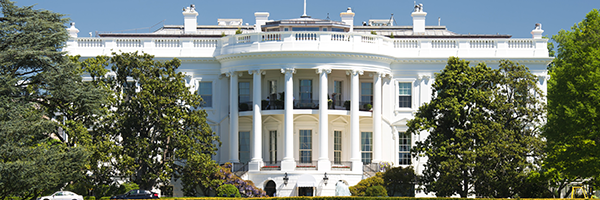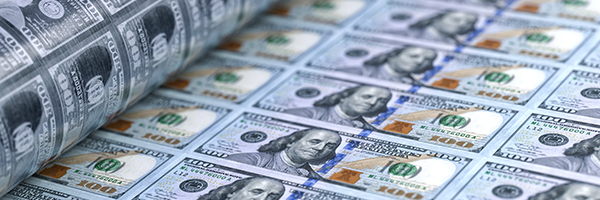 January 6, 2025
January 6, 2025
What You Need to Know Today:
Buon Natale from Venice
Do you know how to tell it’s Christmas here in Venice?

Trade war with Canada could be really nasty
Canada is looking at imposing taxes on major commodities it exports to the United States-—including uranium, oil and potash—if the incoming Trump Administration carries out a threat to impose 25% tariffs on Canadian exports.

So much for that easy fix to China’s consumer economy
China’s retail sales growth unexpectedly weakened in November. Retail sales rose 3% from a year ago. That was the the slowest annual growth rate in three months and it was well below even the most bearish forecast.
Just last week Chinese policymakers elevated boosting consumption to the top priority for next year. That marked , only the second time in a decade that the consumer economy was the focus of official policy.

Special Report: Buys and sells–and other money moves for Trump’s first 100 days. The complete 100 Days
What you need as an investor and what your portfolio needs is a road map to the likely events of the beginning of this new administration. And a take on what those events are likely to mean for the financial markets–and the prices of stocks and bonds. And recommendations on what moves to make to respond to the events of the first 100 days of a Trump Administration. Which is what this Special Report is all about. Here /i’ll give you an investor’s calendar to the first 100 days of Trump; a run-down of the likely effects on the financial markets of the events in the first 100 days; and recommendations for moves that you should make with your portfolio.

Saturday Night Quarterback says, For the week ahead expect
When the Federal Reserve announces its latest interest rate move and it’s Dot Plot projections on future interest rates, inflation, and GDP growth, it will be the Dot Plot projections that matter to the financial markets.

CPI inflation creeps higher in November
Inflation remains stubborn. The Consumer Price Index (CPI) rose at a 2.7% annual rate in November, according to Labor Department data released Wednesday. That was hotter than a 2.6% rise in October. But that matched economists forecasts. It was also above September’s 2.4% annual rate. On a monthly basis, inflation increased 0.3% from October to November, the biggest gain since April. Prices for housing, energy, and particularly food all rose.
CPI core inflation, prices excluding volatile food and energy categories, rose another 0.3% for the fourth straight month. The are rate was up 3.3% for the year. For the past six months, core inflation has been stuck at an elevated level above the Fed’s target of 2%.

Special Report: “10 New Stock Ideas for an Old Rally”–all 10 picks
The Standard & Poor’s 500 Index had a banner first half of 2024 with the index climbing more than 17% as of June 30. But two-thirds of that gain is attributable to just six stocks: Nvidia (NVDA), Microsoft (MSFT), Alphabet (GOOG), Amazon.com (AMZN), Meta Platforms (META), and Apple (AAPL.).Track the performance of equal-weighted version of the S&P 500–rather than the commonly tracked index where the contribution of any stock to the index is weighted by market cap–and the index was up just 3.9% in the first half of 2024. For the second half of 2024 and looking ahead to 2024, I’m not so much worried about the fundamentals of this extraordinary rally as I am by a failure of market imagination Everybody owns the same 6 stocks. Hey, I get the excitement around these stocks and the boom in Artificial Intelligence. I share it. Which is why I own shares of Nvidia, Amazon, and Alphabet in my online portfolios. But there are 494 other stocks in the S&P 500. And 2000 stocks in the small-cap Russell 2000.(Up 9% in the first half of 2024.)After a rally that has recorded 30 new record highs for the S&P 500 just the first half of n 2024, some of that other 494–or 2000–are actually better stock buys, and likely to out perform the 6 stocks everybody owns from their current record high prices. But which ones? That’s what my Special Report: “10 New Stock Ideas for an Old Rally” is all about.
Live Market Report (20 minute delay)

Good news: What we now know about this coming earnings season
It’s still very early in third quarter earnings season, but I think we can already see a pattern.

Investors decide China stimulus isn’t enough
Chinese stocks fell to the verge of a correction in a sign of growing disappointment over the pace of stimulus rollout.The CSI 300 Index ended the day 0.6% lower, bringing its declines from an October 8 high to nearly 10%. Chinese stocks first rallied strongly on stimulus measures announced by the central bank. The CSI 300 soared more than 30% in about three weeks since mid-September before losing momentum. But they’ve fallen hard on growing skepticism about the power of measures proposed so far to restore growth to China’s economy.

Now that’s volatility! Nvidia was up 2.4% on Monday and down 4.82% Tuesday
I think the only important investing question for Nvidia (NVDA) is whether you want to buy it on the dip for along-term score or whether you want to sell when the stock bounces to a record high and then re-buy on the next dip? In my portfolios I’ve got both a one-term position in my 50 Stocks Portfolio, up 182% since December 7, 2023, and a more trading oriented position in my 12-18 month Jubak Picks Portfolio, where the position is up 22% since September 6 even with today’s loss. The stock was up 16% in the last month as of the October 14 close

Special Report: Welcome to the new age of catastrophe capitalism–Part One, what capital markets will look like
Let’s talk today about the changes that global climate change is creating in our capital markets and on the very structure of current capitalism. Part One of this Special Report will look at the nature of the changes. Part Two, later this week, will look at specific implications for your portfolio. Hurricanes Helene and Milton are the perfect case study for the coming changes in capital markets and capitalism.

CPI core inflation ticks upward; 25 basis point cut in November now consensus
Today, both the headline and the core CPI, which excludes food and energy, came in 0.1 percentage point higher than forecast for the month, with a month to month 0.2% increase in the headline index and a 0.3% rise for the core.On an annual basis, the headline index rose 2.4% in September, slightly less than the 2.5% in August. The core inflation rate, the more important number to the Federal Reserve, accelerated for the first time in one and a half years, to 3.3% from 3.2%. Weekly initial claims for unemployment also came out today, Thursday, October 10, and showed a much-bigger-than-expected increase of 258,000, against the median forecast for 230,000. Together the two reports almost cemented the odds of a 25 basis point cut in interest rates when the Fed meets on November 7.

Adding VMC as the third pick to my Special Report “10 new stock ideas for an old rally
Here’s what I wrote today when I added Vulcan Materials to my Special Report “10 new stock ideas for a old rally.”

Today I made my first 2 Harris picks in my Special Report on election stock winners
Today I added 2 Harris picks to my prior 3 Trump picks.

Of course, neither candidate is taking about the soaring budget deficit
The federal budget deficit swelled to $1.8 trillion in the fiscal year that ended in September, the Congressional Budget Office warned today, Tuesday, October 8. In the recently concluded fiscal 2024 year interest payments on the debt reached $950 billion, larger than the size of the Pentagon budget. As of Friday, the United States had accumulated a public debt of $35.7 trillion.
A perfect storm? War, oil, hurricanes, earnings, interest rates all worry stocks at once
It’s not surprising that stocks fell Monday, October 7. But it is surprising that they fell so little. The Standard & Poor’s 500 was off 0.96% on the day. The NASDAQ Composite dropped 1.18%. Wall Street’s favorite volatility gauge–the VIX–jumped to “just” a two-month high. Look at the negatives arrayed against stocks

Wait! No soft landing! No more rate cuts! The market freaks out again!
It’s back! Fear that the economy is so strong that the Federal Reserve won’t cut interest rates as sharply or as quickly as expected. In the last few days, following on a surprisingly strong September jobs report, the market has gone from giving 50/50 odds to a second large 50 basis point interest rate cut at its November 7 meeting to pricing in doubts that the central bank will deliver even a 25 basis point cut.

Saturday Night Quarterback says (on a Sunday), For the week, ahead expect…
I expect a transition from a market dominated by speculation about the pace of interest rate cuts by the Federal Reserve to worries about earnings and the growth rate for corporate profits.

Albemarle, lithium stocks jump on buy-out speculation
Shares of lithium market leader Albemarle (ALB) rose 8.25% on Friday to close at $102.O9 on speculation in Australia that mining giant Rio Tinto (RIO) will pursue a major lithium deal with Albemarle cited as a possible target. Shares of Arcadium Lithium (ALTM), Lithium Americas (LAC) and Sociedad Quimica y Minera (SQM) also jumped, +10%, +7.1% and +3.1%, respectively. The speculation makes sense to me.
Strong September jobs report lowers expectations for 50 basis point cut from the Fed
Odds on a 50 basis point cut from the Federal Reserve at its November 7 meeting plunged to 0% today on the CME FedWatch tool after a strong jobs report for September showed a tick down in the unemployment rate.

September jobs report good news for the economy
The U.S. economy added 254,000 jobs in September, the most in six months. The unemployment rate fell to 4.1% and hourly earnings increased 4% from a year earlier, according to Bureau of Labor Statistics. Strong data is reassuring investors worried that the Federal Reserve had moved too slowly to cut interest rates and that the economy was headed toward a slump.

Money-market fund assets rise to record $6.46 trillion–but what does it mean?
Total assets under management in U.S. money-market funds rose by $38.7 billion in the week week ended October 2, according to the latest Investment Company Institute data released on Thursday. The increase puts total assets at a record $6.46 trillion, and caps the biggest quarter of inflows since the March 2023 banking crisis. The old record was set when the collapse of Silicon Valley Bank and other lenders sent a flood of cash into money-market funds as the Federal Reserve raised rates. What’s odd now is that the Federal Reserve is cutting interest rates and the financial system doesn’t seem particularly stressed.

Right now markets aren’t pricing in regional war in Middle East–that could change fast
What’s amazing to me right now is how complacent Wall Street is about the prospects for a wider regional war in the Middle East. Which could include an attack by Israel on Iran’s nuclear facilities.On a day when Israel vowed to retaliate against a barrage from Iran that rained down missiles on Israel’s Iron Dome defense, West Texas Intermediate oil rose by just 0.39% to $70.10 a barrel. International benchmark Brent crude was ahead just 1.43% to 74.61.
Tesla misses on quarterly deliveries–again
Tesla (TSLA) delivered 462,890 vehicles in the three months to 30 September. That was up 6.4% from the preceding quarter. But the delivery total missed Wall Street expectations for it to deliver 469,828 vehicles. That left the company facing the daunting task of delivering a record 516,344 vehicles in the fourth quarter in order to match its 2023 delivery figure of 1.81 million vehicles. A shortfall would result in Tesla recording its first ever annual drop in deliveries.

Special Report “10 Trump and 10 Harris winners (and 5 losers)–first 3 Trump picks and first 3 Harris picks
I don’t know which candidate will win the election. Right now the polls are within the margin of error on the national level–and even tighter in the seven battleground states that will likely decide the electionm. But I do know the results on November 5 will move stocks. Some right off the bat even before the results are certified. Ans more significantly as a new administration clarifies its policy views and takes office.The results will move the stock market in general
And they will move individual stocks and sectors in particular.

Saturday Night Quarterback Part 2 says, For the week ahead expect…
We’re looking at a huge week of economic data that will support or disturb the current coin-flip odds of a 25-basis-point/50-basis-point cut when the Federal Reserve meets on November 7. Let’s start with the week’s Big Guy, the September jobs numbers due on Friday.

Saturday Night Quarterback says, For the week ahead expect…
Like thousands of other investors and traders, you will have to make a decision on whether to stick with very expensive stocks–especially very expensive technology stocks– in order to catch a potential market melt-up for the end of 2024. Here’s the crunch.



